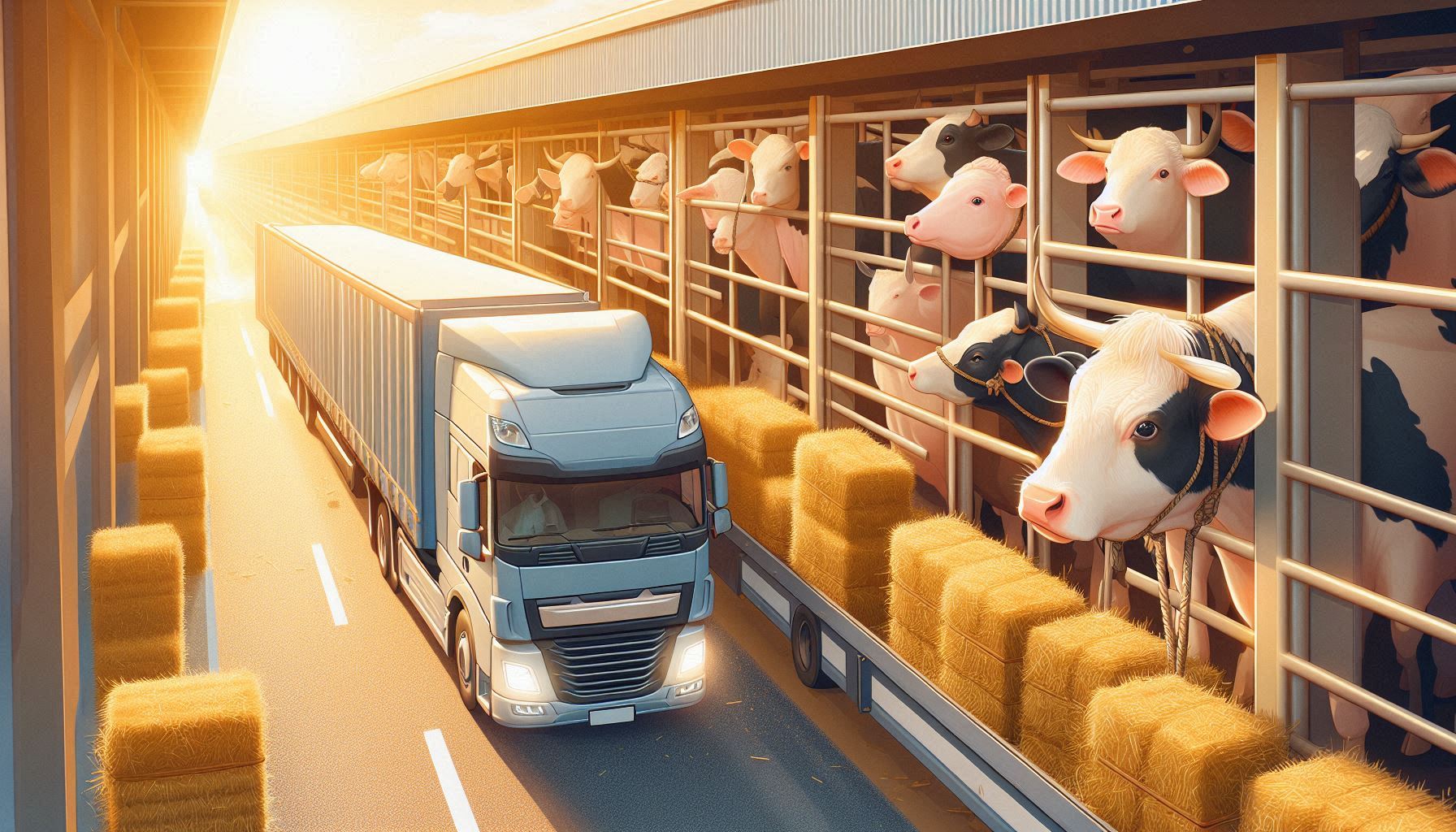Across the European Union, millions of live animals are still transported annually for slaughter, breeding, and fattening. Despite growing concerns about animal welfare and increasing scrutiny of long-distance journeys, the practice continues. But now, veterinarians, economists, animal welfare organisations, and even policymakers are uniting behind a clear message: it’s time to move meat—not animals.
In this article, we explore the reasons behind the growing movement to shift EU transport policy, the practical alternatives available, and how this change could benefit animals, farmers, and the environment.
Why the Current System Fails Animals
Live animal transport exposes animals to long hours in confined conditions, extreme temperatures, hunger, thirst, and injury. Investigations over the last decade have documented:
-
Sheep dying of dehydration after days in hot trucks.
-
Calves transported unweaned without proper feeding.
-
Animals shipped to non-EU countries where welfare standards are not enforced.
Even with recent EU reforms introduced in 2025—which reduced maximum journey times and mandated better transport conditions—problems persist. Enforcement is inconsistent, and animal suffering continues.
The Case for Transporting Meat Instead
Experts increasingly argue that a simple shift in logistics could drastically improve animal welfare: process animals closer to farms and transport refrigerated meat, carcasses, or genetic material instead.
Key Advantages:
-
Animal Welfare: Eliminates the need for long-distance journeys.
-
Food Safety: Meat transport allows for better hygiene and cold-chain control.
-
Efficiency: Transporting processed meat is often more cost-effective and space-efficient.
-
Public Support: Polls show strong EU citizen support for ending live exports.
This model is already common in other parts of the world, where countries have modernised their supply chains to reduce stress and suffering in livestock.
Economic and Practical Feasibility
One concern often raised by the industry is the cost of restructuring existing practices. However, studies show that with modest investment in local slaughterhouses and cold-chain logistics, the benefits quickly outweigh the costs.
Supporting Measures Include:
-
Investment in mobile slaughter units to serve rural areas.
-
Subsidies for local processing plants under EU agricultural development programs.
-
Training and support for farmers and transporters to adapt to new systems.
Transitioning to meat transport doesn’t mean cutting off trade—it means changing how we trade, with greater efficiency and compassion.
Who Is Leading the Call for Change?
Several influential voices are now pushing for this shift:
-
Veterinary groups like the Federation of Veterinarians of Europe (FVE) advocate for local slaughter to reduce suffering.
-
Animal welfare organisations such as Compassion in World Farming and Eurogroup for Animals campaign for a meat-based trade model.
-
Policymakers in countries like Germany and the Netherlands have raised the issue at the EU level, seeking reforms that encourage transporting products instead of live animals.
Even the European Commission has acknowledged in its 2023 impact assessment that “transporting meat or carcasses is a viable and more welfare-friendly alternative.”
The Environmental Factor
Animal transport is not just a welfare issue—it’s an environmental one. Long-distance live transport contributes to:
-
Higher emissions due to inefficient vehicle loads and longer travel times.
-
Wasted resources, such as water and feed used to sustain animals during transport.
-
Spoilage risks, when animal health deteriorates en route, affecting meat quality.
Switching to meat transport streamlines the process and reduces the environmental footprint of the livestock industry.
Public Opinion and Political Momentum
Campaigns like #StopTheTrucks have captured public attention. Over 700,000 EU citizens have already signed petitions calling for a ban on long-distance live transport. The UK’s 2024 ban on live exports added to the pressure, showing that strong action is both possible and politically popular.
With EU elections on the horizon and growing voter concern for animal rights and climate policy, momentum is building for a serious rethink of the current transport model.
What Needs to Happen Next
To accelerate the shift from live animal to meat transport, the EU should:
-
Introduce financial incentives for local slaughter and cold-chain logistics.
-
Phase out subsidies that support long-distance live animal trade.
-
Strengthen regulations limiting live exports and promoting regional meat processing.
-
Support cross-border cooperation to ensure market access for meat and carcasses from smaller producers.
A coordinated EU strategy can make this transition smooth, sustainable, and equitable.
Shifting from live animal transport to meat and genetic material is no longer just an animal rights issue—it’s an economic, environmental, and ethical necessity. As pressure mounts and public opinion shifts, the EU faces a clear choice: continue down a path marked by suffering and inefficiency, or embrace a smarter, more humane model.
The time to act is now—and the solution is clear: meat, not animals.
